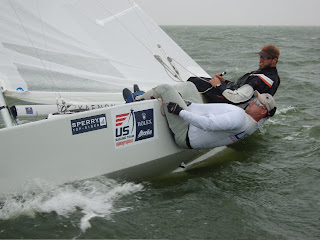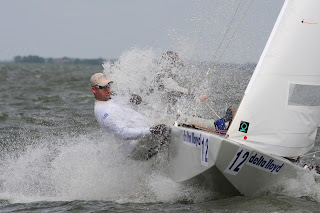 Today was a beautiful day of training on Rio off of Copacabana Beach. We had six boats out for speed testing, amongst them, three world champions, four different boat builders, four sail makers, and in the first lineup over 20 minutes, nobody had a major speed edge. There has been concern over the past few years that the star class has become out of reach for all but the top professionals, but in reality the top professionals gravitate towards the star class because they can showcase their talents against the best.
Today was a beautiful day of training on Rio off of Copacabana Beach. We had six boats out for speed testing, amongst them, three world champions, four different boat builders, four sail makers, and in the first lineup over 20 minutes, nobody had a major speed edge. There has been concern over the past few years that the star class has become out of reach for all but the top professionals, but in reality the top professionals gravitate towards the star class because they can showcase their talents against the best.At dinner the discussion turned to the boat market. In the US alone there are at least six Olympic boats, from three builders, for sale for between $30,000-40,000. In terms of sails, Quantum has been using the same Z4/P2 for the last few Olympics, Ian Percy’s Gold Medal combination is available from North, and there are at least three new sail makers in the mix. There are now boats and masts being built in the US, so now is the time to get in to the best racing around.
Andrew and I are training in Rio for the South American Championships which begin Thursday. Stay tuned for more this week!











